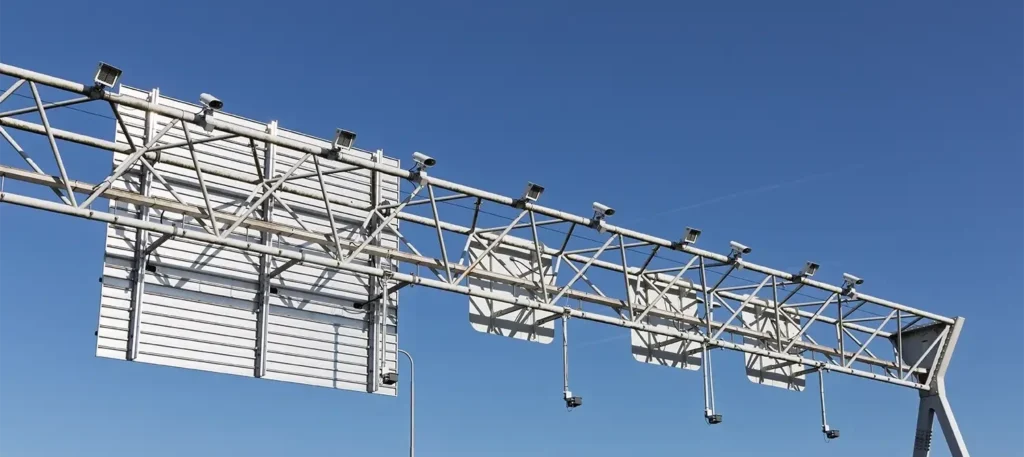
Truck tolling: how to avoid detours and rising logistics costs
From challenge to smart logistics control
The Netherlands will introduce a heavy goods vehicle toll or HGV toll as of July 2026. This road charging toll will undoubtedly bring a new dynamic to the Dutch logistics sector. What may feel like an added burden on operational costs can, if approached correctly, also create opportunities for smarter logistics and structural improvements in collaboration and sustainability.
HGV truck toll demands insight and action
With the arrival of these road charges, gaining control over driven kilometres becomes more critical than ever. Transport companies must ask themselves: are we driving efficiently? Which kilometres are avoidable? Where is there room for optimisation?
Those who already have real-time insights into trip progress, traffic conditions, and vehicle data will have the tools not only to respond but to proactively steer operations.
Collaboration with road authorities is also crucial. During road closures or long detours, the impact of road charging on transport costs can quickly escalate. Extra kilometres due to detours mean higher costs, especially with multiple trips per day. This is something transporters should not discover in hindsight, but anticipate in advance to take timely action.
By integrating real-time information on roadworks and closures into the planning process, alternative routes can be calculated ahead of time, avoiding unnecessary extra mileage. The Simacan platform enables seamless integration of this data with traffic and trip information, helping prevent costly surprises.
Electric driving requires smart coordination
Electric trucks (e-trucks) are partially exempt from or receive discounts on these road charges. However, the transition to e-trucks introduces new uncertainties, such as driving range, charging infrastructure, and scheduling charging stops. These challenges require more than just visibility, they demand intelligent coordination.
Simacan allows users to assess real-time battery levels, planned stops, and charging points in context. Users are given the functionalities to coordinate and align charging moments and route choices with the real-time situation and the broader supply chain planning.
Insight is accountability, also for finance and audits
What you plan isn’t always what you execute. Think of an electric truck that unexpectedly breaks down and gets replaced by a diesel vehicle, with direct toll implications. Simacan helps you detect and explain these differences in real time. Any deviation between planning and execution is automatically marked and linked to the trip data. This makes it easy to explain deviations to your client or use them in your own financial reporting. No more guesswork, just full control, down to the last kilometre and cent.
Stronger together in the logistics chain
HGV toll reinforces a truth already known: supply chains grow stronger through collaboration. Moving beyond siloed operations toward shared data and joint decision-making creates opportunities to maximise every kilometre, vehicle, and schedule.
With our platform, carriers, shippers, and receivers work together with real-time visibility into trips, expected arrivals, and potential disruptions. This enables a logistics Control Tower that not only provides visibility, but actionable insights.
Looking ahead with confidence
The shift toward the HGV truck toll and electric trucks demands adaptation. But with the right digital support, it doesn’t have to be a leap into the unknown. By investing in visibility, collaboration, and intelligent steering, this development becomes a valuable opportunity to future-proof your logistics operations.
From 1 July 2026, the Netherlands will introduce a HGV truck toll, for all heavy goods vehicles over 3.5 ton. This per-kilometre charge will apply on national highways and selected provincial and municipal roads. Rates depend on the vehicle’s weight and emission class; lighter, cleaner trucks pay less. The system will replace the current Eurovignette and lower existing truck taxes. A large share of the toll revenue will be reinvested in making road freight more sustainable, including subsidies for zero-emission trucks and charging infrastructure.
This might also interest you:

HGV Toll
Simacan’s HGV toll functionality gives European transport and logistics companies real-time insight into kilometre-based toll costs. Track toll impact per route, vehicle and emission class,

EV Monitoring
Simacan EV monitoring provides real-time insight into electric truck battery status, range and charging activity. Trusted by European transport companies for smarter, more reliable and
Tagged HGV toll, lower operational costs, truck tolling

